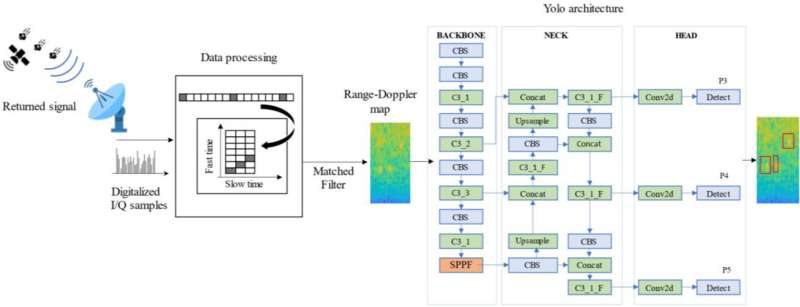The team modeled a prominent radar system in Europe (called Tracking and Imaging Radar) in tracking mode to produce training and testing data. Then, the group compared classical detection systems with a You-Only-Look-Once (YOLO)–based detector. (YOLO is a popular object detection algorithm that has been widely used in computer vision applications.)
An evaluation in a simulated environment demonstrated that YOLO-based detection outperforms conventional approaches, guaranteeing a high detection rate while keeping false alarm rates low.
"In addition to improving space surveillance capabilities, artificial intelligence–based systems like YOLO have the potential to revolutionize space debris management," said co–corresponding author Federica Massimi, Ph.D., of Roma Tre University, in Italy.
"By quickly identifying and tracking hard-to-detect objects, these systems enable proactive decision-making and intervention strategies to mitigate collisions and risks and preserve the integrity of critical space resources."
More information: Federica Massimi et al, Deep learning‐based space debris detection for space situational awareness: A feasibility study applied to the radar processing, IET Radar, Sonar & Navigation (2024). DOI: 10.1049/rsn2.12547
Provided by Wiley



